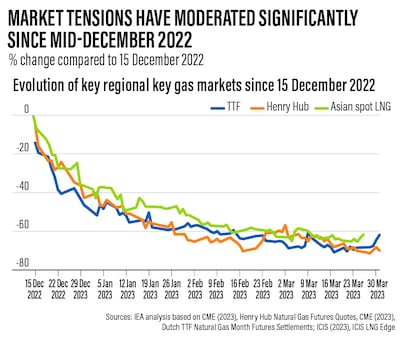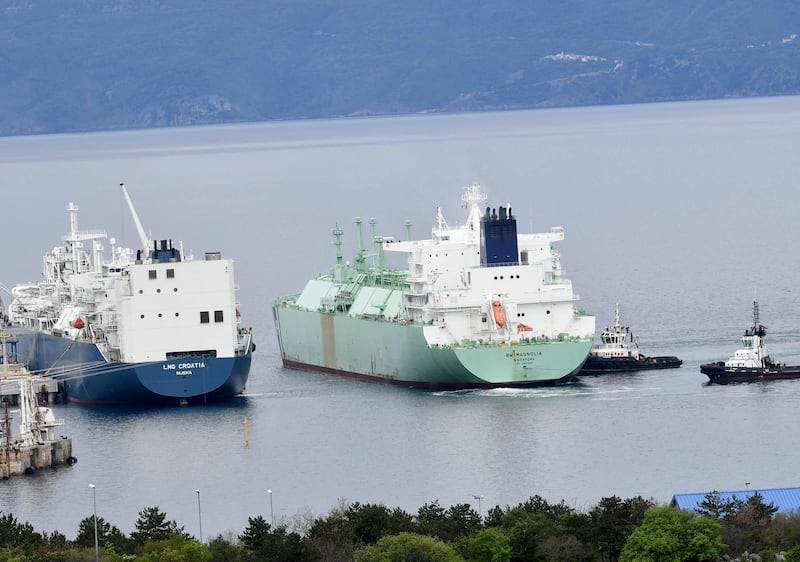A steep decline in natural gas prices and higher storage levels have eased the pressure on global gas markets this year, the International Energy Agency has said.
The prices of liquefied natural gas in the European and Asian spot markets fell below summer 2021 levels by the end of the first quarter of 2023, but were “well above” historic averages, the agency said in its Gas Market Report on Thursday.
Dutch Title Transfer Facility gas futures, the benchmark European contract, is currently trading below €40 ($44.19) per megawatt hour after surging to a record high of about €343 in August last year.

Storage sites ended the winter with inventory levels exceeding their five-year average as the sharp drop in gas prices reduced the need for withdrawals, the agency said.
“This is expected to reduce injection demand during the summer of 2023, and potentially ease market fundamentals,” it added.
“The improved outlook for gas markets in 2023 is no guarantee against future volatility and should not be a distraction from measures to mitigate potential risks.”
Supply is expected to be tight in 2023 amid uncertainties such as adverse weather, lower availability of liquefied natural gas and further curtailment of exports by Russia, the agency said.
LNG exports surged last year as European countries scrambled to secure alternative sources of energy.
The agency said it expects global LNG supply this year to increase by only 4 per cent, which would not be enough to offset an expected drop in Russian gas supplies.
Business Extra in Davos: Energy in crisis and transition

The US, which has emerged as Europe’s biggest supplier of the supercooled fuel, is projected to account for more than half of the global supply increase in 2023, the agency said.
Freeport, the second-biggest US LNG export plant, has restarted operations after it was shut down due to a fire in June 2022.
The plant can process up to 2.1 billion cubic feet of natural gas per day and export 15 million tonnes of LNG per year.

Meanwhile, global demand for natural gas is expected to remain “flat” this year as consumption declines in Europe and North America, the agency said.
In Asia, gas demand is projected to increase by about 3 per cent, with China and India as the main drivers.
China, the world’s second-largest economy and the biggest energy importer, has reopened its economy after nearly three years of adhering to a strict zero-Covid policy.
Lockdowns in China and the subsequent drop in demand made more natural gas available to importers in Europe.
The agency said it expects gas demand in China to increase by more than 6 per cent this year, supported by a recovery in economic activity.
In the Middle East, gas demand is forecast to increase by 2 per cent, driven by Iran and Saudi Arabia.
Demand in Europe is expected to fall by 5 per cent amid higher renewable energy adoption.
Following strong growth in 2022, the demand for gas in the US is predicted to fall by 2 per cent due to decreased use of gas in space heating, industrial processes and power generation.





